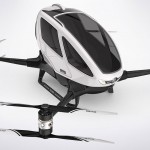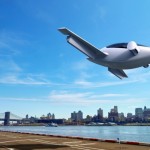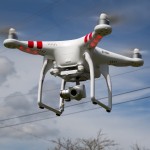The Use of Apps in Aviation: Is it a bird? Is it a plane? No it’s an iPad
Guest blogger Chris Oquist, private pilot and writer, looks as the increasing use of iPads in the cockpit

Last year, the USA’s Federal Aviation Authority (FAA) agreed to allow pilots to switch out their stacks of manuals and navigation charts for digital (and more lightweight) versions on an iPad.
Spotting pilots lugging around 40 pounds of paper in their flight bags is becoming a rarity. Soon tablets in cockpits will be as ubiquitous as aviator sunglasses.
Since 2011 airlines have been jumping on the paperless bandwagon and seeking the approval of the FAA to use apps in aviation. There has been a steady phasing out of manuals and issuing of tablets. In the next year or so, it is likely that most major airlines will have FAA approval to use the apps as an “electronic flight bag” in their daily routine.
Airlines distribution and utilization of tablets reduces costs by the millions and saves hours of pilots’ time each day. Yet, much debate has taken place during this shift about whether or not this is a safety hazard or would cause interference with the aircraft’s flight systems. And many aren’t convinced it is reliable source (usually those who haven’t yet experienced it).
Yet it has quickly gained tremendous popularity among those pilots who have made the switch. And for good reason. It has been proven reliable, efficient, accurate, and convenient. The ability to use apps instead of digging through all the paper versions of compulsory manuals is a significant time saver. We all know how often all of those pages must be updated and how much time, money, and resources are required during the process.
The apps (which don’t require WiFi access once installed) provide a pilot with nearly everything he or she could possibly need for flight. They can be utilized in preflight checks and planning; during flight for navigation; and afterwards to review their flight. Information can be stored – and most importantly found – quickly. You can check your weights and balances; weather; runway data; emergency procedures…and so on. Any information you could possibly need is just a few taps of a finger away.
Here’s my pick of the apps – three of the more popular aviation apps on the market today:

1) AeroPad (iPhone/iPad)
Developed by Thomas Wana
Price: $3.99
When it comes to a simple and easy to use PDF/image viewer, look no further than the AeroPad. Easily download aircraft manuals and e-charts to digital files conveniently located on your mobile device. In addition to its convenient method of storing and organizing info, the app also includes day/night modes, a “whiteboard” for taking notes and a chronostat page for keeping track of times and calculations.
2) AeroWeather Pro (iPad/iPhone/Android)
Developed by Pascal Dreer
Price: $3.99
The glory of the AeroWeather Pro app is in its simplistic nature. Most weather apps for aviators are riddled with unnecessary gadgets, doodads, and radars – however AeroWeather aims to fulfill your meteorological needs with the least amount of clutter possible. Instead the app includes METARs and TAFs in an easily-reviewable format, providing only the most vital info for pilots.
3) FltPlan.com Mobile (iPad/iPhone/Android)
Developed by Keith Gillis
Price: $0
This app by the popular FltPlan.com is meant to work hand-in-hand with the site to bring the ever-resourceful flight plan provider to your fingertips. By enabling users to download routes, approach charts, navigation logs, and FAA-certified QICP weather (all for free) from the site, aviators can then take everything they need into the cockpit and access said information sans internet connection.
About the Author:
Banyan Pilot Shop in South Florida. He is a blogger and writer whose expertise includes aviation headsets and other pilot supplies.
The PrivateFly app
PrivateFly’s app is aimed at the private jet passenger, rather than the pilot. See instant private jet prices from your home or current destination, plus latest private jet empty leg offers at up to 75% discount. More about the PrivateFly app.
Related content

Latest news in pilotless planes & self-driving cars

Lilium: The flying car in your garage



